Key Points:
- Scientists can figure out how old rivers are by examining the valleys, mountains, and other geological areas surrounding them.
- While the Colorado River is considered the 10th oldest river in the world, the Colorado, Murrumbidgee, and Nile rivers could easily tie, as they are all around 75 million years old.
- The Rhine River, which flows through six different European countries, is estimated to be 240 million years old, being formed during the Triassic Period.
Rivers have always been incredibly important to the development of humanity and continue to serve as lifelines for trade and obtaining food. The largest of these flowing watercourses can stretch thousands of miles, cutting through mountains and flowing across continents. Given their impact on the development of modern life, it’s only natural to wonder when some of these rivers formed.
That’s why we’re going to answer the question, what is the oldest river in the world?
How Can We Tell What Is the Oldest River in the World?
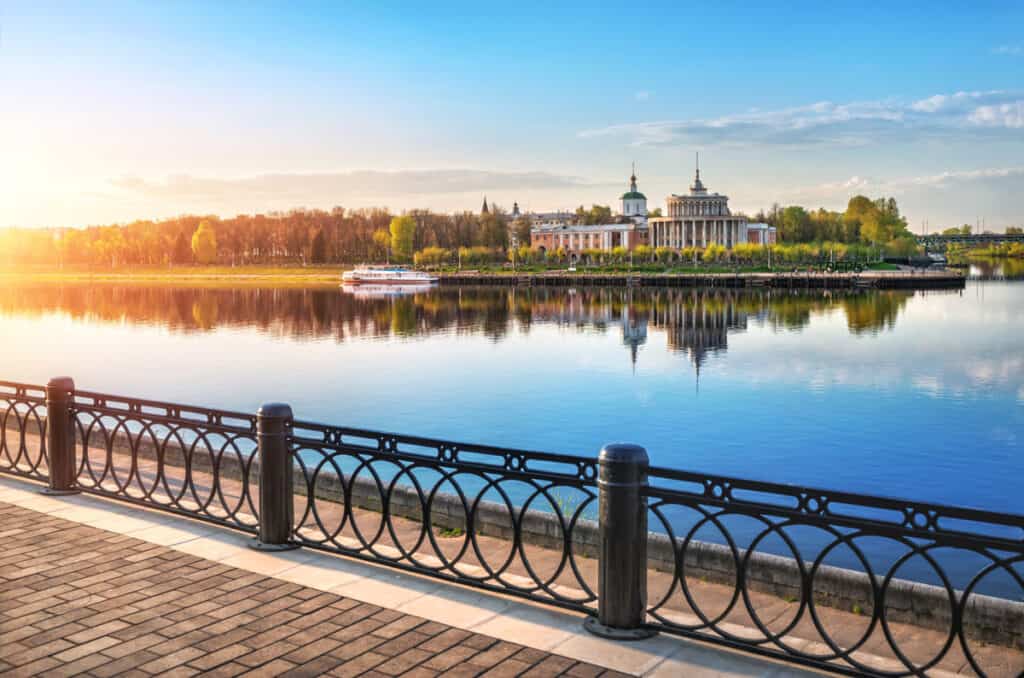
The Volga River is a cherished and beloved symbol of Russia.
©iStock.com/yulenochekk
Before we start looking at the oldest rivers, we have to answer this nagging question: how can humans tell which river is the oldest? That’s a fair question with a simple answer. Scientists determine the oldest river by looking at the surrounding areas.
By examining the valleys, mountains, and other geological areas surrounding a river, we can get a good idea of when the river formed. Other factors that scientists consider are the age of river sediments and how deep the water runs through the riverbed.
With all this information, scientists can make an educated guess about the river’s age. Of course, it’s hard to be precise with the ages of rivers. That’s why you’ll often see an age range when discussing the oldest rivers in the world.
The 10 Oldest Rivers in the World
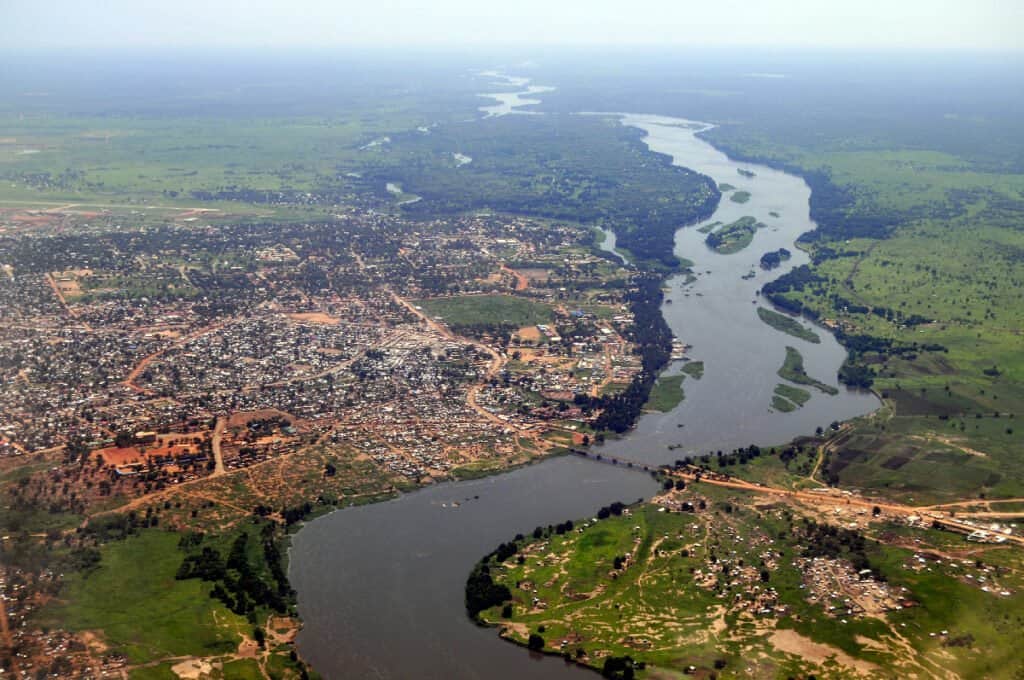
The Nile River was once considered the longest river in the world, and it’s one of the oldest in the world.
©iStock.com/Phototreat
The rivers on this list were flowing since dinosaurs roamed the Earth. While it’s hard to pinpoint the exact dates for the rivers’ creation, scientists have provided sound reasoning for the age of the rivers we’re going to examine. Without further ado, let’s check out the oldest rivers from around the world!
10. Colorado River: 75 Million Years Old
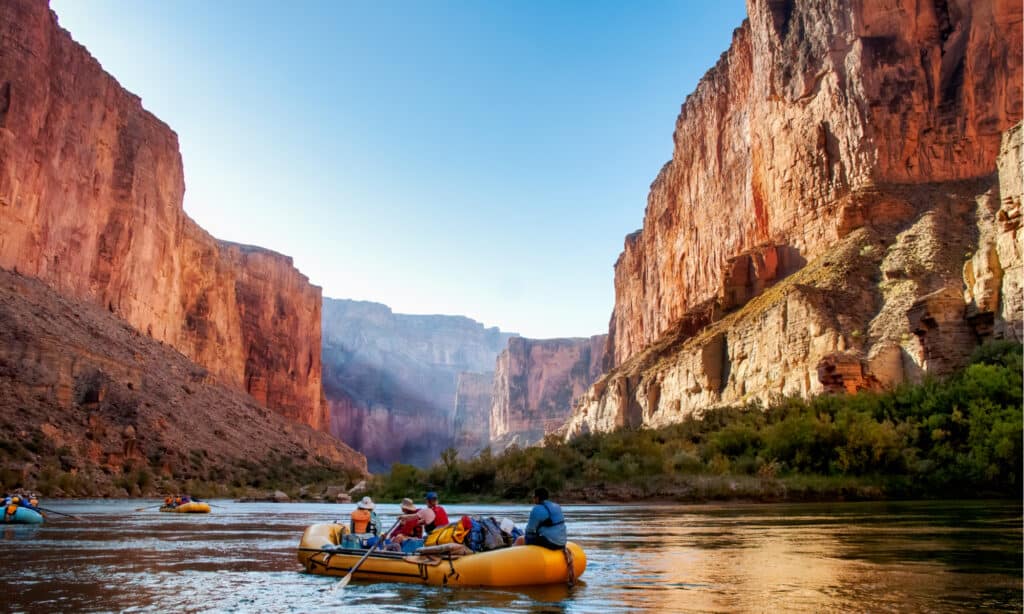
The Colorado River runs through the Grand Canyon.
©Jim Mallouk/Shutterstock.com
The position of the 10th oldest river in the world is actually a potential three-way tie between the Colorado, Murrumbidgee, and Nile rivers at about 75 million years old. However, the Colorado River is the one with the best claim for being at 75 million years old at least.
Located in the southwestern United States, this river developed during a major geological event known as the Laramide orogeny, a time when the Rocky Mountains were first created. Also, the Colorado River is one of the largest rivers in the United States.
9. Macleay River: 80 Million Years Old
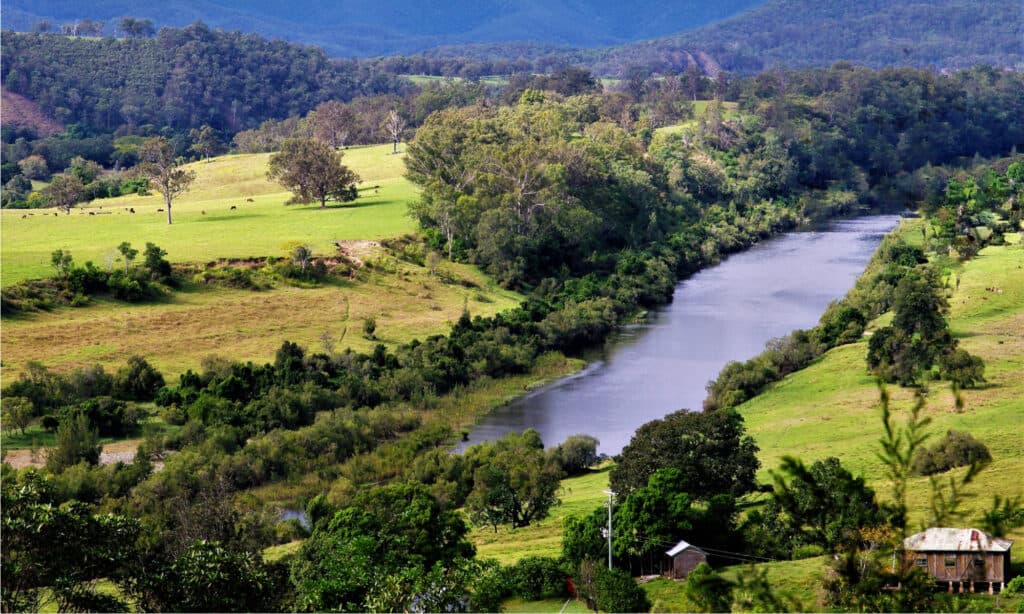
The Macleay River is found in Australia and is believed to be 80 million years old.
©SGCoo/Shutterstock.com
The Macleay River is located in Australia and flows for 185 miles before emptying into the Tasman Sea. The river formed just before the uplift of the Great Escarpment that took place in eastern Australia, allowing scientists to estimate that the Macleay River is at least 80 million years old.
8. Amur River: 125 Million Years Old

The Amur River is 125 million years old.
©Kutikan/Shutterstock.com
The Amur River flows through Russia and China, and it is known as one of the longest rivers in the world. Scientists believe that this river formed 125 million years ago during the Cretaceous period. However, the river flows between mountains that are even older than that.
7. Save River: 205 Million Years Old
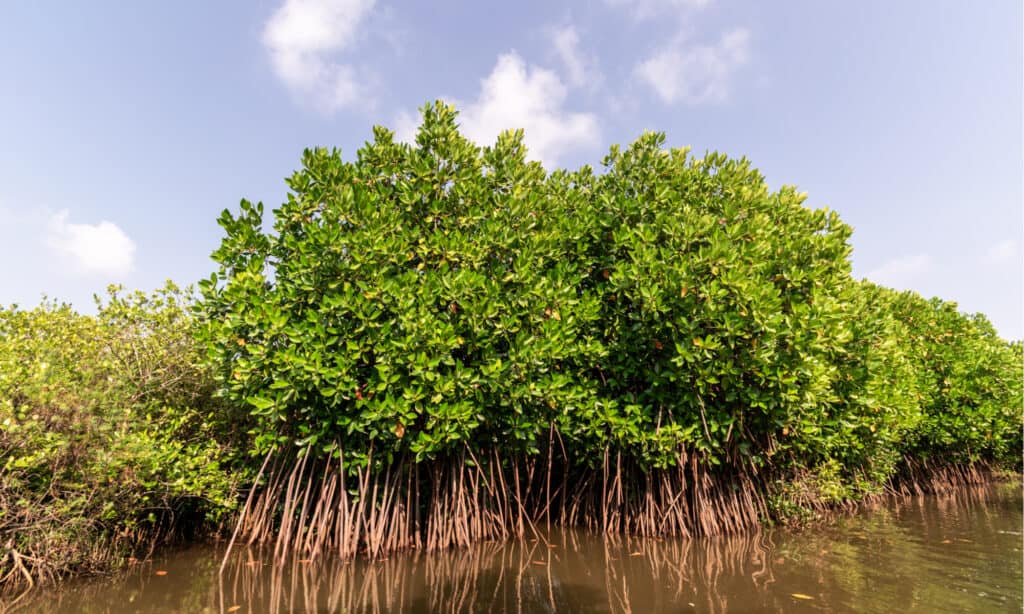
The delta of the Save River features 60 miles of mangrove forests.
©balajisrinivasan/Shutterstock.com
The Save River flows through the countries of Zimbabwe and Mozambique in Africa. The river empties into the Indian ocean, and it’s believed to be about 205 million years old. The estimation follows the timeline of the breakup of Gondwana, a supercontinent.
6. Rhine River: 240 Million Years Old

The Rhine River flows through six different countries.
©iStock.com/sborisov
The Rhine River is estimated to be 240 million years old. The river flows through several countries including France, Germany, and Switzerland before it eventually empties into the North Sea. Scientists believe the river was formed during the Triassic Period.
5. Susquehanna River: 260-325 Million Years old

The Susquehanna River is believed to be up to 325 million years old.
©Jayce Wyatt Photography/Shutterstock.com
The Susquehanna River is located in the United States, flowing through New York state, Pennsylvania, and Maryland, and eventually emptying into the Chesapeake Bay. The river is believed to be up to 325 million years old. Like the French Broad River, the Susquehanna River was formed during the Alleghenian orogeny.
4. New River: 260-325 Million Years Old
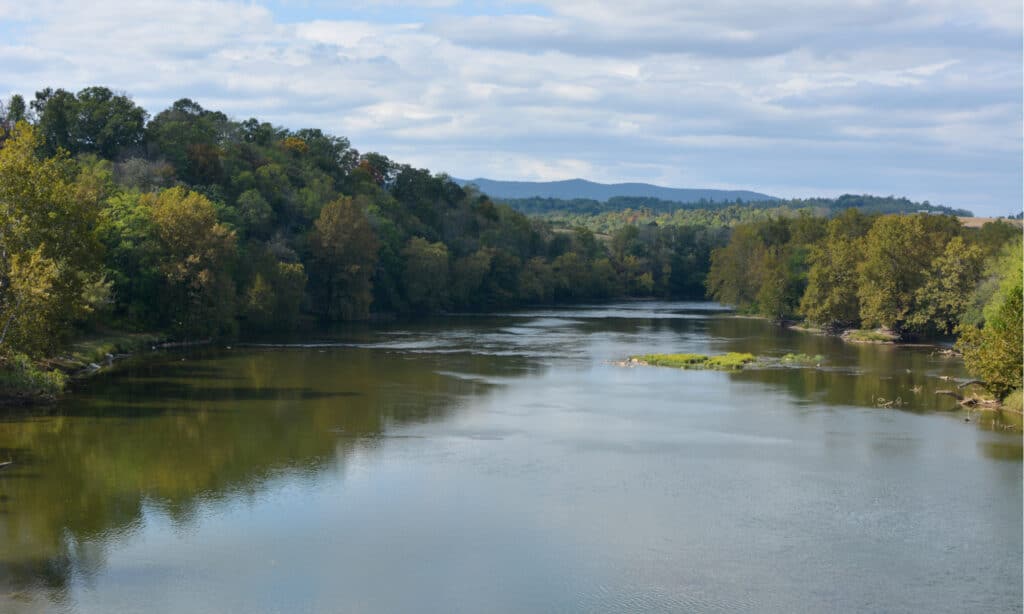
The New River doesn’t live up to its name and is 325 million years old.
©Realest Nature/Shutterstock.com
Despite its name, the New River is up to 325 million years old, tying with the Susquehanna for the third or fourth oldest river in the world. This river is located in the eastern United States and eventually outflows into the Kanawha River. Along with the Susquehanna River, the New River is the oldest river in the United States.
There are multiple accounts of how the New River got its name. One is that it’s derived from a term in the native American dialect that can be translated as “new waters.” Another story is that the historical figure Captain Byrd saw a depiction of this river on an old map, but with no name affixed to it, and so deemed it “New River.” A third tale is that Colonel Abraham Wood was the first white man to come across the river and named it himself.
The date of the river’s formation is also a mystery. Some claim it’s the second-oldest river in the world, but not enough evidence exists to substantiate that claim.
3. French Broad River: 320-340 Million Years Old

The French Broad River is another ancient river flowing from the Appalachian Mountains.
©Dominick Aprile/Shutterstock.com
The French Broad River was formed during the Alleghenian orogeny, resulting in the Appalachian Mountains. This river flows through North Carolina and empties into the Tennessee River. Unfortunately, providing a precise date for this river’s creation is difficult due to the geological activity in the area making the topography look younger.
2. Meuse River: 320-340 Million Years Old

The Meuse River has many twists and turns as it flows through France, Belgium, and the Netherlands.
©Henryk Sadura/Shutterstock.com
The Meuse River flows through several countries in Europe, eventually reaching the North Sea. The river’s name means “maze” and refers to the numerous bends in the river. Estimates say this river is upwards of 340 million years old.
This river is part of the Rhine-Meuse-Scheldt delta, a series of waterways that are highly significant for trade and transportation. Moreover, this river has historical significance dating back to the days of the Roman Empire. Today, it’s the third-longest river in France.
1. Finke River: 350-400 Million Years Old

The Finke River is believed to be the oldest river in the world at 350 million years of age.
©Keitma/Shutterstock.com
The Finke River is more than 350 million years old, making it the oldest river by somewhere between 10 and 50 million years! This river is located in central Australia and flows into the surrounding desert.
Interestingly, this river is not a permanent fixture; it only flows a few times every year and it doesn’t always reach its outlet at Lake Eyre. The indigenous name for this lake is Lara Beinta, a name meaning Salt River.
The age of this river was determined based on several geological factors. Due to the unique plains on which the river formed, it’s deduced that the river formed before a mountain-building event occurred. That means the river is older than the Alice Springs Orogeny, and that event occurred between 300 and 400 million years ago.
Where Is the Finke River Located on a Map?
The Finke River, the world’s oldest river, is one of four main rivers of the Lake Eyre Basin. Its source is in the MacDonnell Ranges in the Northern Territory and it flows through Central Australia, including the West MacDonnell and Finke Gorge national parks. It is 87 miles west of Alice Springs.
The Oldest Rivers in the World May Change

Our understanding of the oldest rivers in the world could change.
©rawaccess/Shutterstock.com
We have shown you 10 of the oldest rivers and the estimated dates of their creation. However, it’s hard to be precise with times that are so long ago. Some of these placements may be out of order, but a lot more evidence would be needed to change the order of this list.
That evidence could be produced in the future as new understandings of geology emerge. For now, you can boast knowledge of the oldest river and how we know a river’s age. Not only is this some top-quality trivia but it’s also bound to interest anyone in your life that loves science!
Summary of the 10 Oldest Rivers in the World
Here’s a review of the 10 oldest rivers on our planet, as determined by scientists:
| Rank | River | Age | Location |
|---|---|---|---|
| 1 | Finke River | 350-400 million years old | Australia |
| 2 | Meuse River | 320-340 million years old | Europe |
| 3 | French Broad River | 320-340 million years old | United States |
| 4 | New River | 260-325 million years old | United States |
| 5 | Susquehanna River | 260-325 million years old | United States |
| 6 | Rhine River | 240 million years old | Europe |
| 7 | Save River | 205 million years old | Zimbabwe & Mozambique |
| 8 | Amur River | 125 million years old | Russia & China |
| 9 | Macleay River | 80 million years old | Australia |
| 10 | Colorado River | 75 million years old | United States |
What Animals Live in and Along Rivers?
Rivers are diverse ecosystems that are home to a wide variety of plant and animal life. From the smallest insects to the largest mammals, many species have adapted to life along the river’s edge and within its waters. Some of the most common animals that live in and along rivers include:
- Fish: Rivers are home to many different species of fish, including catfish, carp, salmon, and many others. These fish play a vital role in the ecosystem by providing food for larger predators and helping to control the populations of smaller animals like insects and crustaceans.
- Reptiles: Turtles, crocodiles, and alligators are just a few of the reptile species that can be found living along rivers. These animals are well adapted to life in the water and on land, and they play important roles in maintaining the balance of their ecosystem.
- Birds: Herons, kingfishers, and ducks are just a few of the bird species that can be found living along rivers. These birds use the river for food, shelter, and as a place to raise their young.
- Mammals: Beavers, river otters, and muskrats are just a few of the mammals that can be found living along rivers. These animals play important roles in shaping the river’s environment and providing food for larger predators.
- Amphibians: Frogs, toads, and salamanders are just a few of the amphibian species that can be found living along rivers. These animals play important roles in the ecosystem by providing food for larger predators and helping to control the populations of smaller animals like insects and crustaceans.
- Invertebrates: Insects, snails, and clams are just a few of the invertebrates that can be found living along rivers. These small creatures play important roles in the ecosystem by providing food for larger predators and helping to control the populations of smaller animals like phytoplankton and zooplankton.
In conclusion, rivers are home to a wide variety of plant and animal life, each playing an important role in maintaining the balance of this dynamic ecosystem.
The photo featured at the top of this post is © Neil Lockhart/Shutterstock.com
Thank you for reading! Have some feedback for us? Contact the AZ Animals editorial team.






